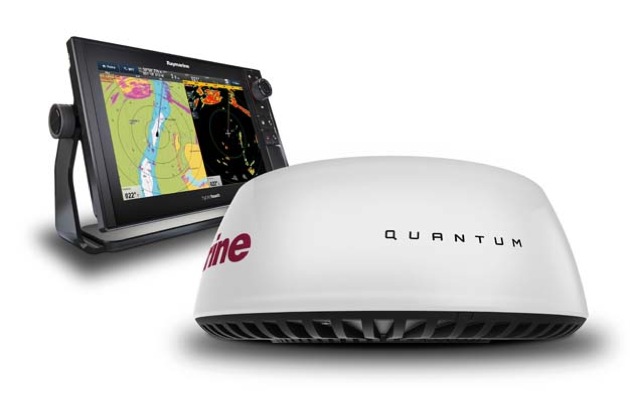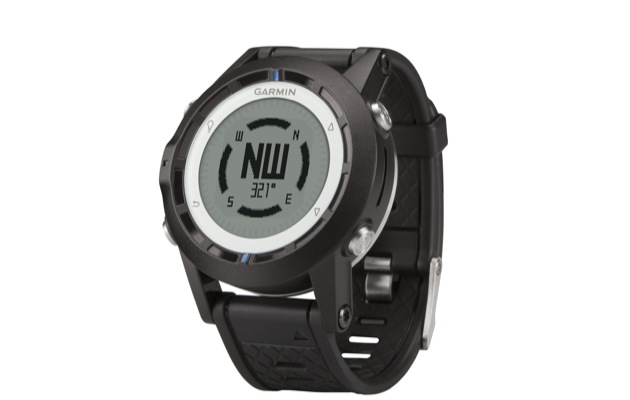See further, see more and sail faster... Will Bruton investigates the navigation benefits that augmented reality is bringing
Google’s mission statement is ‘to organise the world’s information.’ This almost impossibly ambitious declaration of intent underpins the technology giant’s ventures into everything up to and including Space. The message is clear: in a world where information is abundant, how we organise and access it is fundamental to it being useful.
Step on board a yacht equipped with an early electronic plotter and you can quickly find yourself the slave to a complex and far from intuitive menu system. It can take forever to get to what you need to know, making it quicker to pick up the almanac, and do things the old fashioned way.
Fortunately, things have improved since those first electronic plotters. We are now entering an age of innovative and user-orientated design where the influence of mainstream consumer technology has finally reached marine electronic products. But what does it all mean for the sailing we stepped on board a boat for in the first place?

Knut Frostad carefully considered where sailing information was positioned on his Outremer 5X
Make it relevant
Former Volvo Ocean Race CEO and Olympian sailor Knut Frostad bears rather more brutal scars of marine electronics than mere frustration, once nearly losing his eye to an errant antenna while racing offshore. Since leaving the shore-based role of CEO at the Volvo Ocean Race he has taken the helm at Navico as head of digital products. Navico is the parent company to three marine electronics brands, including B&G.
On a particularly revealing video on the company’s YouTube channel we see how the ex-Olympian uses technology on his family’s yacht, an Outremer 5X. Screens are positioned precisely at eye line height, electronic plotters are visible from all (four) helming positions and everything is carefully refined to show only the information that is useful.
It’s an attention to detail more likely associated with a German luxury car, where everything sits just right. The take-away is one we can all learn from; by filtering out what’s not necessary, the sailing experience is optimised. Retaining a firm grasp on the technology is what empowers successful sailing, not an abundance of raw data.
The challenge faced by designers is not simply to provide data, but to make information useful. Raymarine currently employs around 100 people in its development team. Improvements in how software is developed have changed things. Marine brands now design plotter interfaces on the same platforms as mobile phone software; making the process of development faster.
The result is interfaces that are inherently more intuitive to use, making the much thumbed paper manuals of the past redundant. The less obvious and more exciting prospect is the scope for increased capability of a single piece of hardware as time goes on, adding capability as new external components are released.
Article continues below…
Raymarine Quantum – a revolutionary new radar using Chirp technology
Raymarine claims its new Quantum Chirp radome is the lightest and most efficient radar in its class. Chirp technology is…
Garmin Quatix watch
Apart from telling the time, one of the most useful functions on the ground-breaking Garmin Quatix sailing watch is the…
All of this has made the marine electronics market more competitive, with each manufacturer driving hard to capture the market at the point of purchase. After all, once purchased, you often commit to that brand of electronics throughout your yacht.
Augmented reality, something achieved by linking cameras, GPS, image stabilisation and software technology, is perhaps the most exciting realisation of how the humble electronic plotter has become much more than an interactive chart. It’s changed my sceptical view of how much more can be done to make things better. By presenting data overlaid on a live camera view, we see much more, without having to connect the dots.
Military precision
For many years Raymarine’s parent company FLIR has been building military and aviation technology. Unsurprisingly, this knowledge has percolated through to consumer marine electronics. In the sky, the possibilities of augmented reality became mainstream years ago, giving pilots what they call ‘increased situational awareness’ or information about the stationary and moving objects they must negotiate their way around.

The Raymarine FLIR system’s ability to track targets with thermal imaging has many potential uses
What is striking about how this has manifested itself in Raymarine’s yacht systems is how chart and traffic information appears in a three-dimensional format that is genuinely intuitive. Unlike relating the chart to what’s seen with the naked eye as we have always done, with augmented reality, the relation of a buoy or vessel is done for you; bridging the gap in a way that seems entirely natural. No brain power necessary.
Everything appears automatically, in the place you would expect it, supplemented with data that’s directly relevant to that specific point up ahead. How much information you see is easily controlled by choosing what data you wish to see. Furthermore, on the screen, buoys are visible before you see them with the naked eye.
The view on the screen in a busy Southampton water, even with all data points (AIS, buoyage and waypoints) switched on, is clear rather than crowded. A high definition camera fuels the system with a live image, while AIS data, buoyage and waypoints are overlaid on top.

Augmented reality places information about a vessel or mark in the same place as you see it with the naked eye, removing the need to interpret from a standard plotter view
“What you see on the screen is a feed from a fixed camera, however the image is digitally stabilised,” explains Richard Marsden from Raymarine. “Our independent sensor is taking into consideration the pitch, roll and yaw of the vessel, so when the seas get rough the image remains stable. There’s a lot of vessel data being processed to achieve such clarity.”
Sure enough, as we encounter wake from a passing tanker, the image is noticeably smoothed out whilst the boat continues to pitch and roll. Coupled with Raymarine’s Axiom plotter, which is available up to a whopping 24in screen, it’s a far cry from the greyscale interrogation exercise many of us were familiar with from using older plotters.
Coming into a channel is where the augmented reality system really comes into its own. It would be easy to discount a technology that quite literally alters what we can see as something likely to produce the tunnel vision so many experienced instructors warn us against.

Valuable nav data is displayed in an easy to understand format
But because drawing information from augmented reality is so instantaneous, I found myself using it to confirm my own visual navigation rather than the other way round. I had to squint at a channel marker in the distance, yet I could confirm what it was on the screen with a half-second glance, while keeping my eyes up rather than down. Being able to see further than the naked eye makes navigation a more predictable exercise, because everything is seen earlier.
A step forward for safety?
The US Coast Guard cites the most common contributing factor to sailing yacht accidents as operator inattention, followed by improper lookout and operator inexperience.
When it comes to active navigation, doubt about our position leads our attention away from the immediate indicators surrounding us – like buoyage – and onto other sources of information that might take longer to process. Augmented reality, though, is an instant reference tool.

Augmented reality software can identify and label the high definition view from a boat’s onboard camera
Raymarine has also added other complementary technologies that work fluidly as part of the system. In a MOB situation at night a rotating camera with thermal imaging technology can track a target automatically in the water, based upon the temperature difference it can detect. The Axiom plotter then tells the helmsman which way to steer towards it. Unlike many bits of kit related to that worst of worst-case scenarios, this potentially lifesaving tool takes no time to set up. It just works.
What next?
With a change of pace of development for marine electronics comes a market that is working harder than ever to be first to the next big thing.
Garmin, a company whose products cover many sports, is paying an increasing amount of attention to body-worn technologies. Though not strictly speaking augmented reality, their latest Nautix kit places key sailing data directly in front of one eye. Mounting to your existing sunglasses frame, this eyepiece is similar to those worn by combat helicopter pilots. It is also wireless, perhaps making it the next big thing for racing crews, including those usually left in the dark at the bow.

Garmin’s Nautix system monitor links wirelessly with the yacht’s instruments, making data accessible to anyone wearing the headset
Will such a Star Trek like device draw ridicule amongst a crew of old hands? Perhaps to begin with, but if it delivers results, that will quickly fade. For Raymarine, linking cameras to onboard systems is something being explored even further, using them to develop automatic berthing in marinas – a prospect that, once refined, will certainly be embraced by the motor yacht market.
For sailing yacht owners, blindly adopting the latest electronics innovations has sometimes been a fast track to running hard aground. But what augmented reality does is bring aboard essential information and present it in a more concise and effective way than ever before. Don’t knock it until you’ve tried it!






